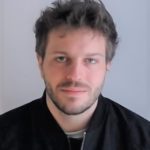Link to HAL – Click here
L’imagerie par bioluminescence est une technologie d’imagerie optique basée sur la détection de photons produits par une réaction biologique entre un substrat et une enzyme dans les tissus vivants. Cette technique d’imagerie, peu bruitée, est utilisée dans de nombreux domaines de la recherche biomédicale et notamment en oncologie préclinique. Le flux de photons émis par une tumeur est liéa son volume et son état métabolique, nécessitant une localisation précise de celle-ci. Certaines expériences impliquent la visualisation de signaux multiples (par exemple 2 tumeurs) sur le même animal ce qui rend leur quantification difficile car la délimitation manuelle de la région d’intérêt (ROI) doit être plus fine et est le plus souvent arbitraire. Dans ce travail, nous étudions l’utilisation de la décomposition factorielle par Factorisation Non-Négative de Matrice (Non-Negative Matrix Factorization, NMF) comme méthode de séparation des sources afin de permettre une quantification plus précise de chaque tumeur sans a priori spatial.


